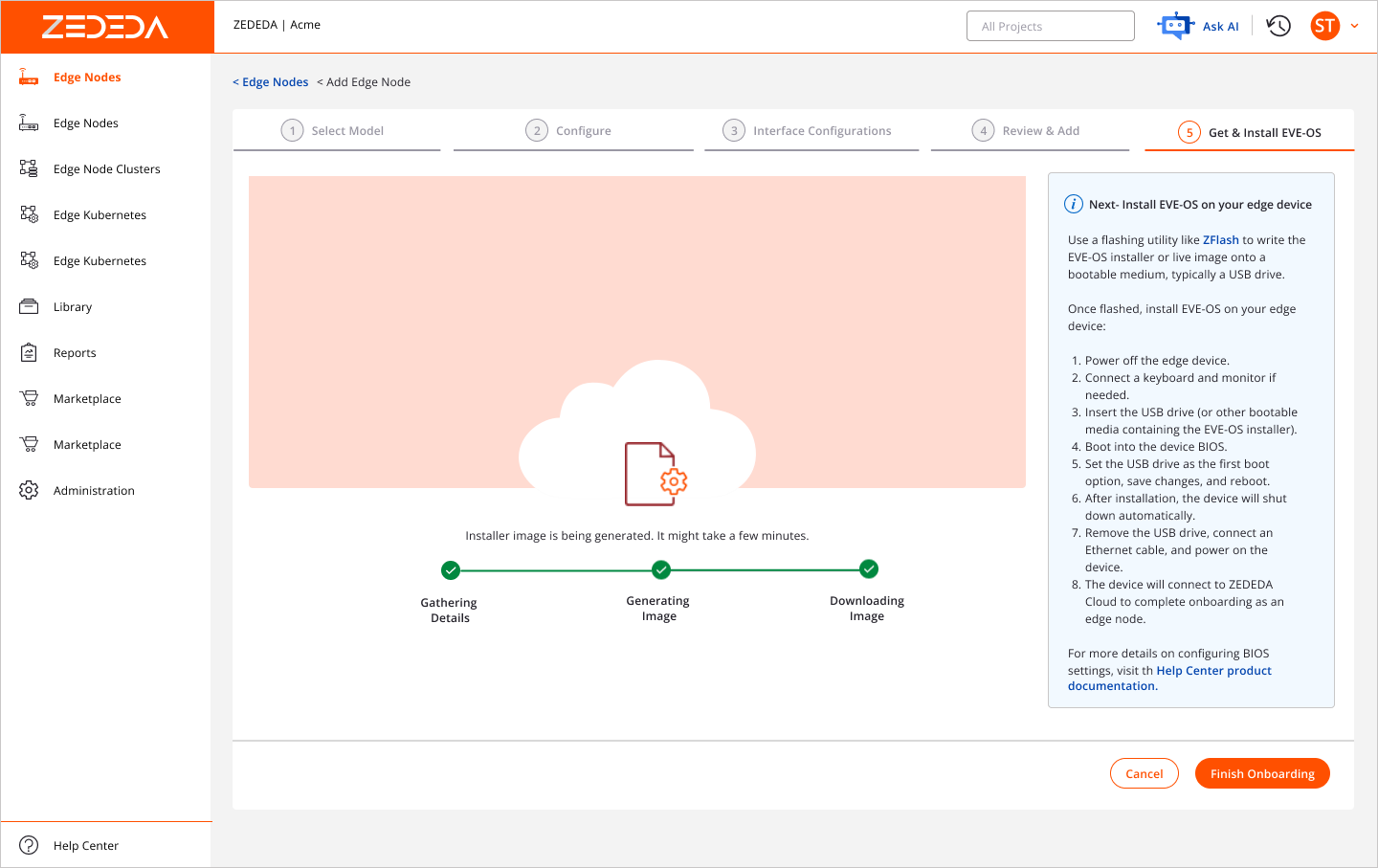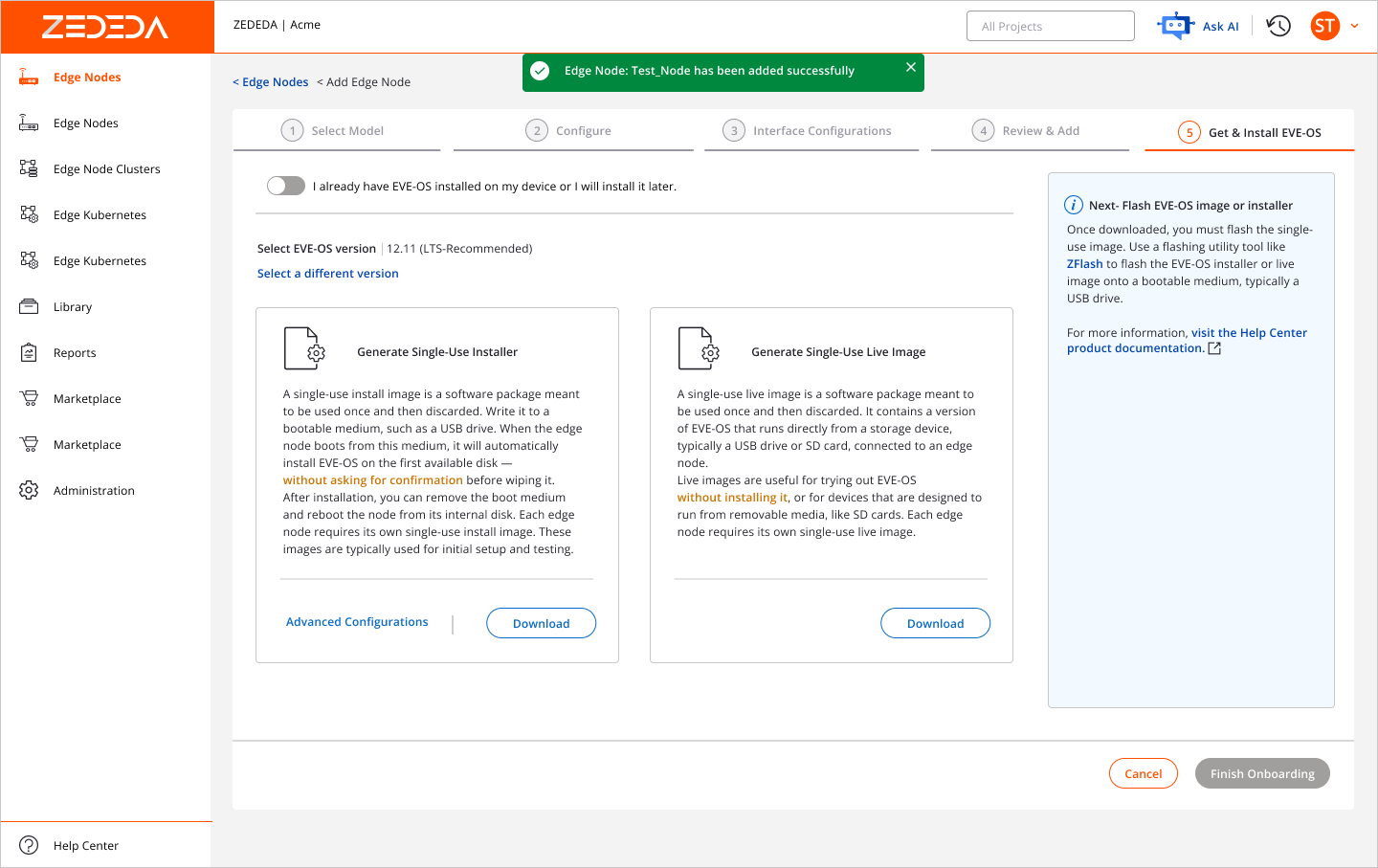Edge Node Onboarding Flow (2025)

Evolving the onboarding experience for edge orchestration.
Role: Lead UX designer.
Activities: User research, design strategy, wireframing, prototyping, user testing, and design specs creation.
CONTEXT
Onboarding a node is a critical part of the ZEDEDA introductory experience. This flow is crucial for users to start using our products, but it also serves as a sales tool to show prospects how our product works and feels.

PROBLEM STATEMENT
This ‘flow’ is the sum of separate interactions in different sections and platforms to achieve only one task: Onboard a node to the ZEDEDA Control platform. How this user experience has been built has pushed the creation of manual processes and additional support documentation so our users can achieve the tasks.

APPROACH

Research Methods: Contextual interviews with team members and customers, Cognitive walkthroughs, Usability analysis, Heuristics analysis, Ux benchmark, and user flow mapping.
Design Process
1. Research phase to gather quantitative and qualitative information.
2. Information analysis to gather findings and insights to discuss with stakeholders
3. Ideation and production of a wireframe prototype.
4. User testing for the concept prototypes and later refinement.
5. Layout of the new user flow to be discussed with stakeholders (business and engineering).
6. Preparation of the deliverables for implementation.
Tools Used: Figma as the base tool to compile and analyze information and design the prototypes.
SOLUTION & OUTCOME
The result was a wizard flow where the user can perform each step of the process without the need to leave the flow to 'prepare' necessary items, such as model import or network creation. Additionally, we utilize an installer that enhances in-person interaction, making the connection of the node easier.
Impact: This is a critical flow for demoing and selling, as well as onboarding users to the product. The improvement of this flow added value to both the demo experience and the overall user onboarding experience by reducing the time and effort required to perform this task.
Results
1. The edge node onboarding process was reduced to less than 10 minutes. Before, it could take several hours or even days.
2. User frustration was reduced when they discovered they could create networks, projects, and select models directly in the flow instead of leaving the flow and losing information and time.

